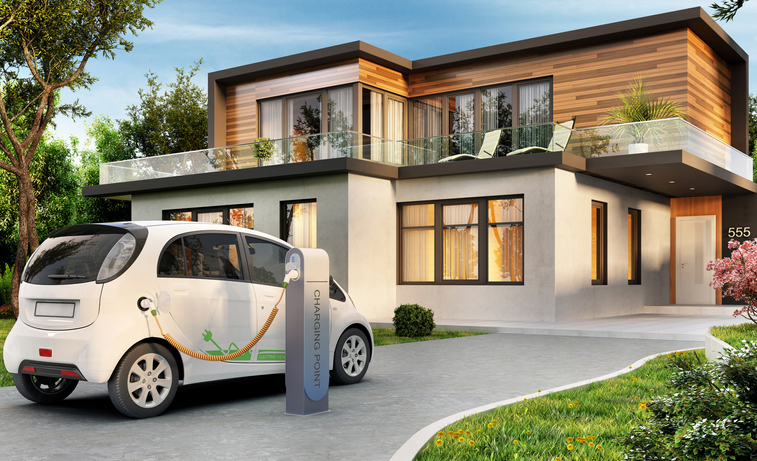EV (electric vehicle) charging infrastructure is still sparse—although the five-year $1.2 trillion Infrastructure Investment Jobs Act suggests billions will be spent on a national network of EV charging stations. Still, while many wait for this to actually come to fruition, others are building the hubs they need inside their own homes.
A February 2022 study by Juniper Research suggests EV charging at home will exceed $16 billion globally in 2026, which is up from $3.4 billion in 2021. Simply put, this growth rate is in excess of 390% in the next five years. One of the big reasons for this growth is due to the lower cost and convenience of home charging for EVs, rather than costly and frequently inconvenient public charging networks.
As we move forward, there are three key points to consider as we connect our EVs to our homes, creating the charging hubs we so desperately need.
Costs and Levels to Consider
Perhaps one biggest factors to think about is the cost to charge at home—both in terms of the monthly electricity bill and the cost of putting the different level chargers into homes—which is something we have covered extensively here on this blog. While there is certainly an upfront expensive, the savings on fuel economy will prove beneficial over time—especially with the rising costs of gas prices these days. We could be seeing that savings in our pocketbooks sooner than we think.
Partnerships Galore
Many of the charging vendors and automotive manufacturers are forming partnerships to make home charging central to future EV transitions, given the fragmented availability and high costs of public charging networks, according to Juniper. In many cases, these companies are also directly partnering with builders to make this process as seamless for homeowners as possible. Naturally, this will accelerate adoption of EVs in the homes.
EV-Ready Homes
Perhaps one of the biggest considerations is if a home is EV-ready, which provides consumers with safe access to power supply for EV charging. Pre-wiring new homes during construction can save a homeowner hundreds of dollars later, according to ENERGY STAR. There are two key elements that need to happen to build an EV-ready home. First is to pre-install conduit and to designate enough space and capacity on the main electrical panel or garage subpanel. The second is to wire a Level 2-ready outlet, which allows a homeowner to purchase a plug-in Level 2 EV charger without the extra wiring expense.
Juniper’s study suggests more than 21 million households globally will charge using a home wallbox by 2026, up from just 2 million in 2021. The research found the global hardware revenue from home charging wallboxes will reach $5.5 billion in 2026, from just $1.8 billion in 2021. This is because the bundling of home wallboxes will incentivize users to take up specific charging points at the point of vehicle purchase.
Costs, partnerships, and if a home is EV-ready are some of the key factors to consider when building or buying a new home with the intent to charge an electric vehicle. Is your home EV ready?
Want to tweet about this article? Use hashtags #IoT #sustainability #AI #5G #cloud #edge #futureofwork #digitaltransformation #green #ecosystem #environmental #circularworld


